With frame: 127.5x119.5x5 cm
We are faced with a fascinating work from the 18th-century French School, which interprets the classical theme of Aeneas and Dido, focusing specifically on the foundation of Carthage and Aeneas's navigation, rather than their tragic love story.
The painting is characterized by a late Baroque or Rococo composition, typical of the early or mid-18th-century French style. The scene unfolds in a coastal landscape, with figures grouped in the foreground.
At the center of the composition, we see the imposing figure of an elderly man, likely Aeneas or perhaps a wise counselor, wrapped in a blue-green drape and wearing a vague helmet. He points authoritatively toward the left of the painting, where we can glimpse the ships or perhaps the city under construction. His expression is grave and determined.
To his right, in a regal yet relaxed posture, sits Dido, Queen of Carthage. She is splendidly dressed in an emerald green and gold gown; On her head is a diadem, and her hair is adorned. Next to her, on the right, is an anchor, a symbol of navigation, of landing, and of the founding of a new city, Carthage. The anchor, placed in the foreground, emphasizes the aspect of stability and creation. Dido gazes at the older man with an attentive expression.
In the foreground, two male figures, presumably Ascanius (the son of Aeneas, often depicted as a young man) and another companion, are intent on studying maps and navigation. The young man, bare-chested and wearing a turban, rests his hand on a terrestrial or celestial globe, a symbol of the geographical and astronomical knowledge essential for travel and founding. The man in the foreground, wearing a blue jacket and a red cloth, leans over a map, indicating a point with his hand. At their feet are a compass and a box, further attributes related to navigation and topography.
The use of color is vibrant and luminous, in keeping with the 18th-century aesthetic, with particular attention to the draping of the fabrics, which have an almost silky texture. The slightly blurred blue sky and the soft landscape on the left create an atmosphere of epic grandeur and, at the same time, a certain serenity, typical of the classicism of the period.
The depicted episode, while not immediately attributable to a specific moment of tragic love, seems to evoke the preparations for the journey and the foundation, in which Fate (perhaps represented by the elderly figure) and Reason prevail over passions.
Condition: The painting is in good condition.
We remain at your disposal for further information.



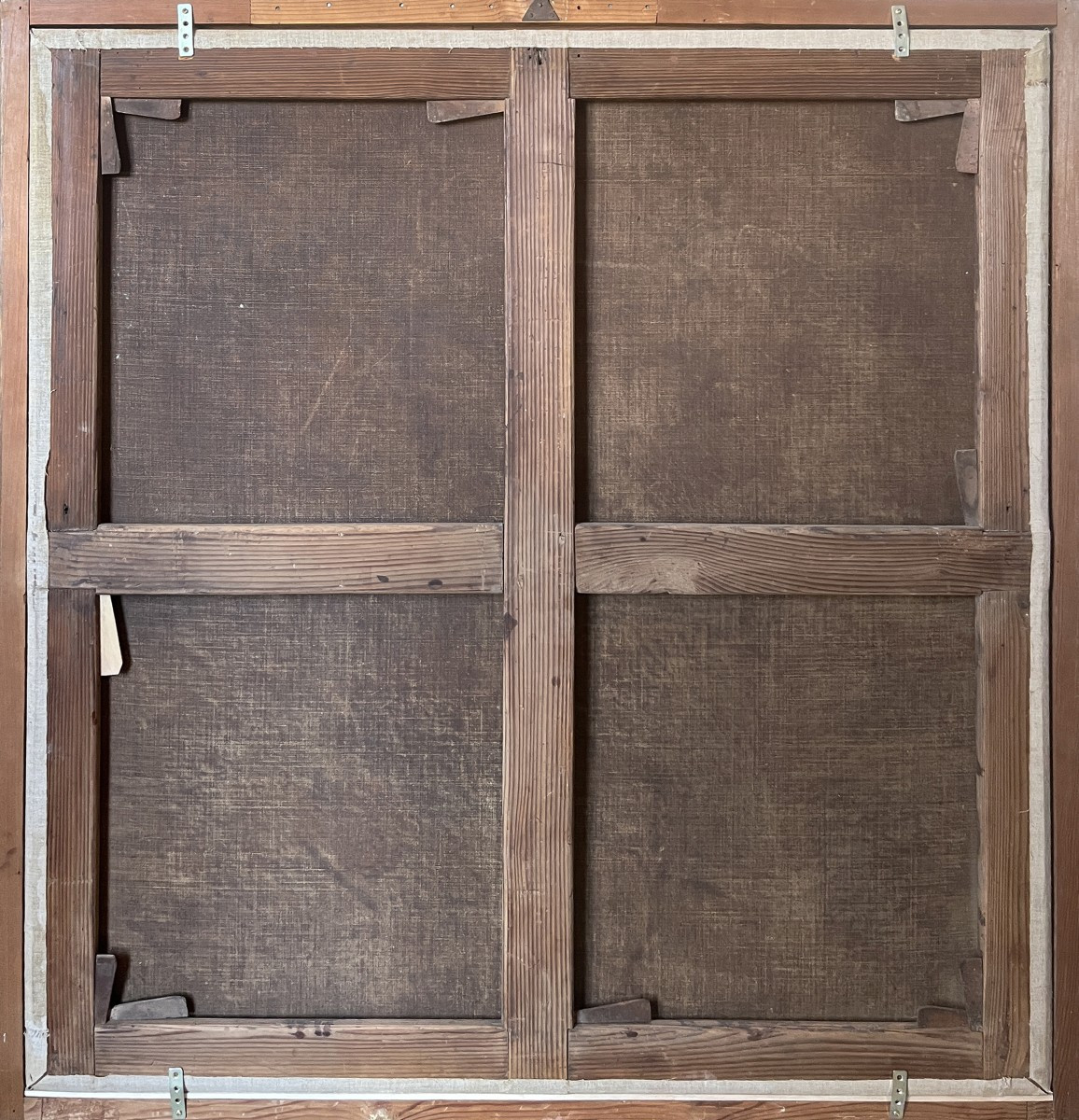

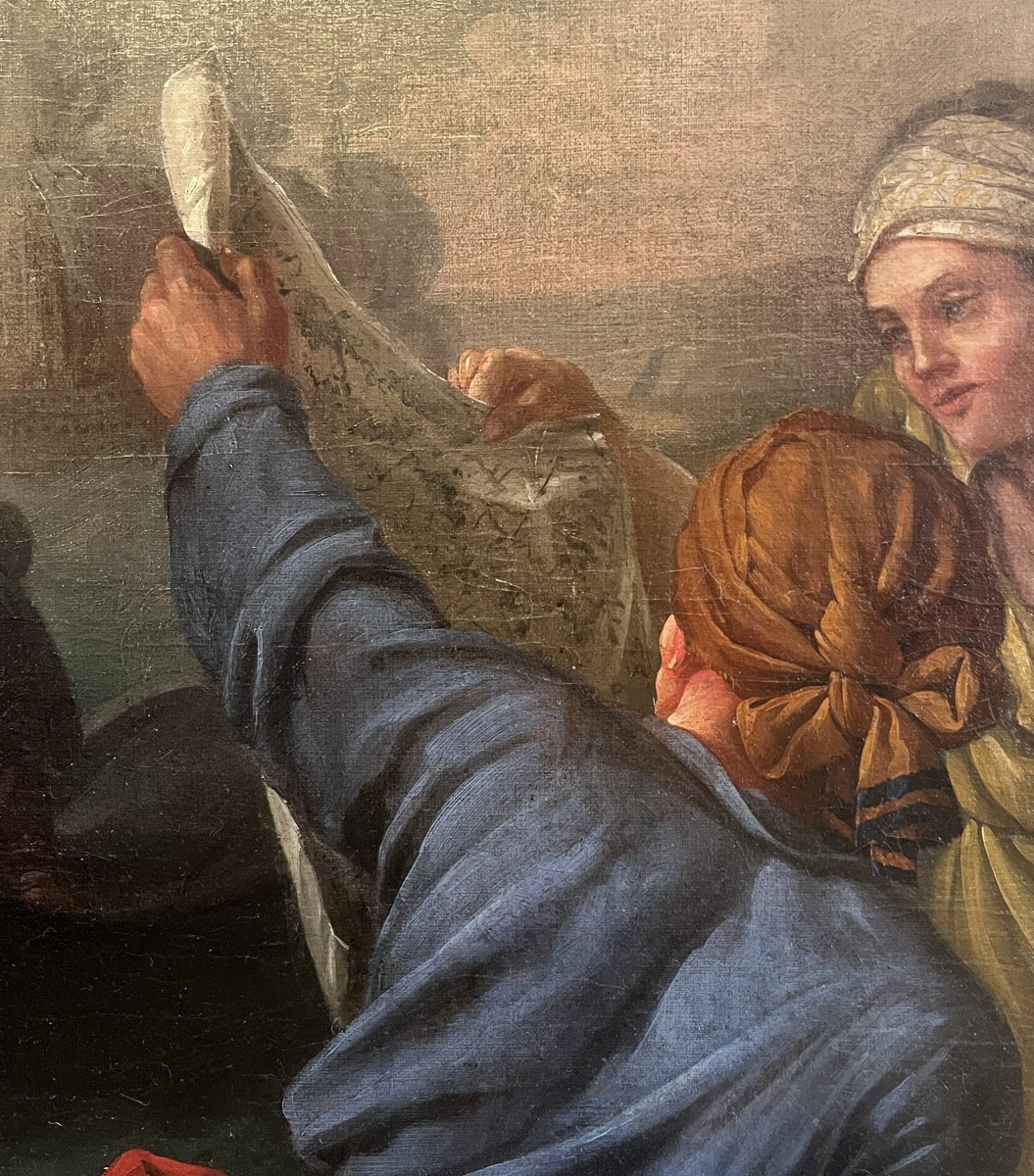
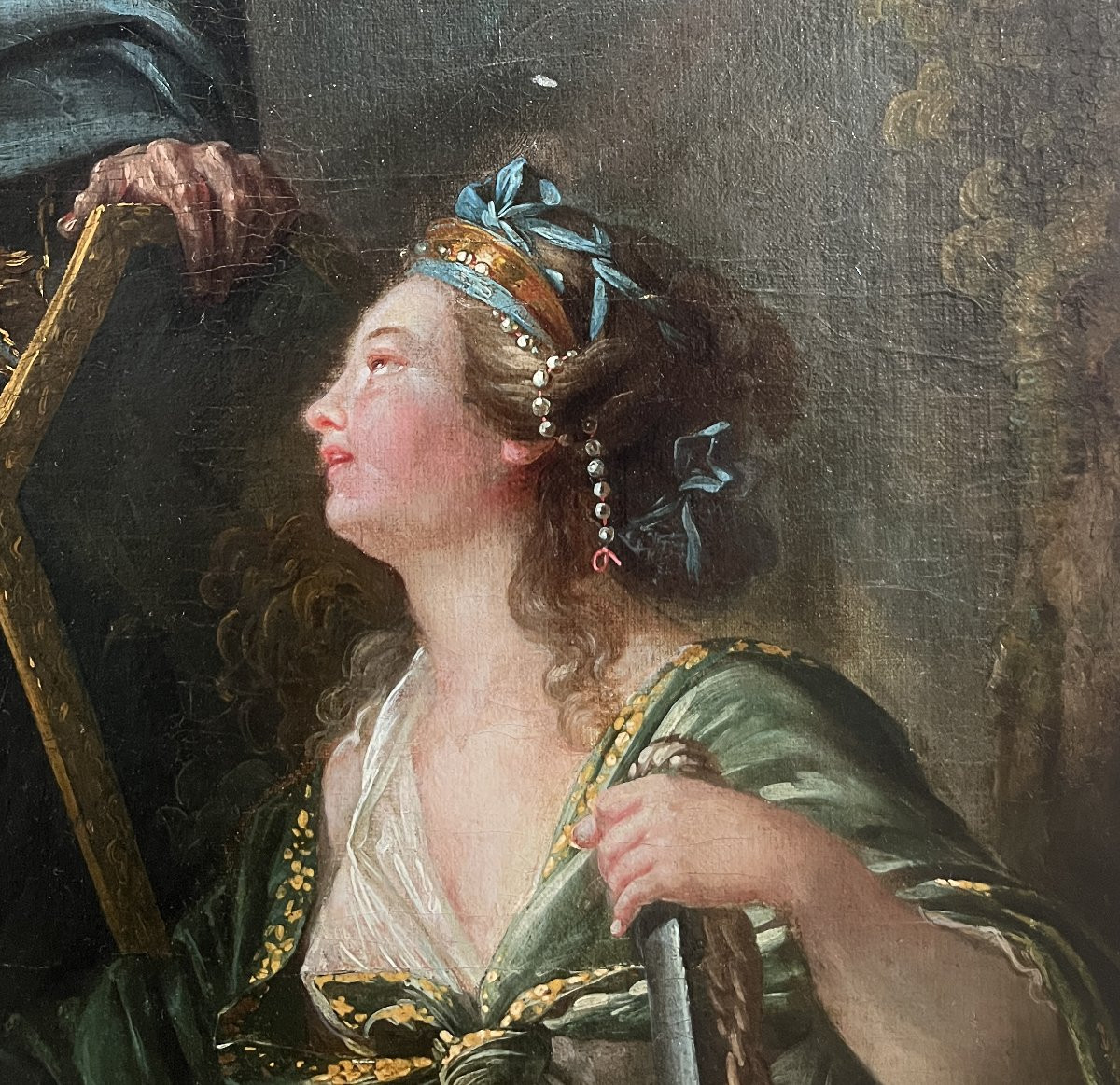

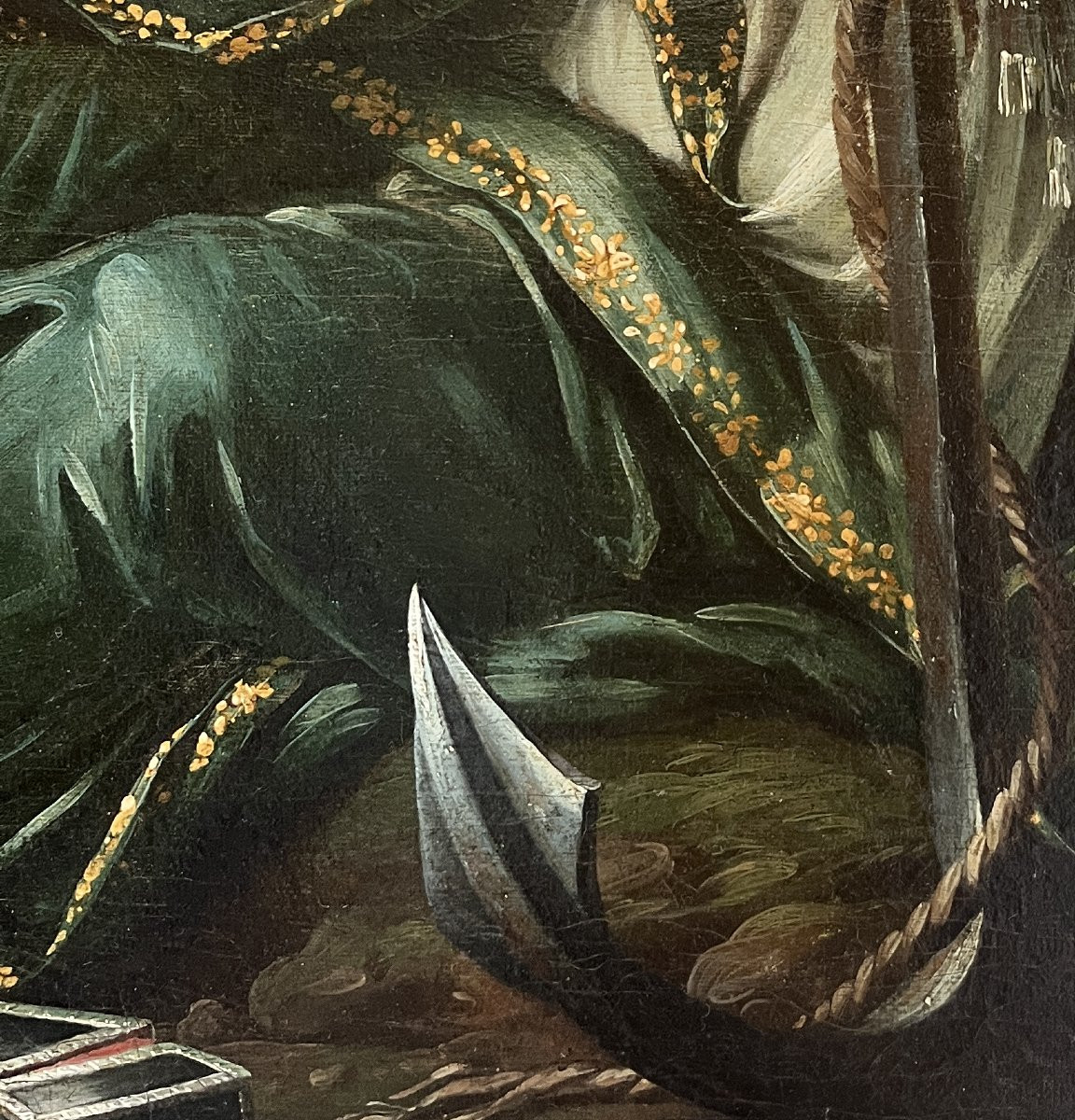
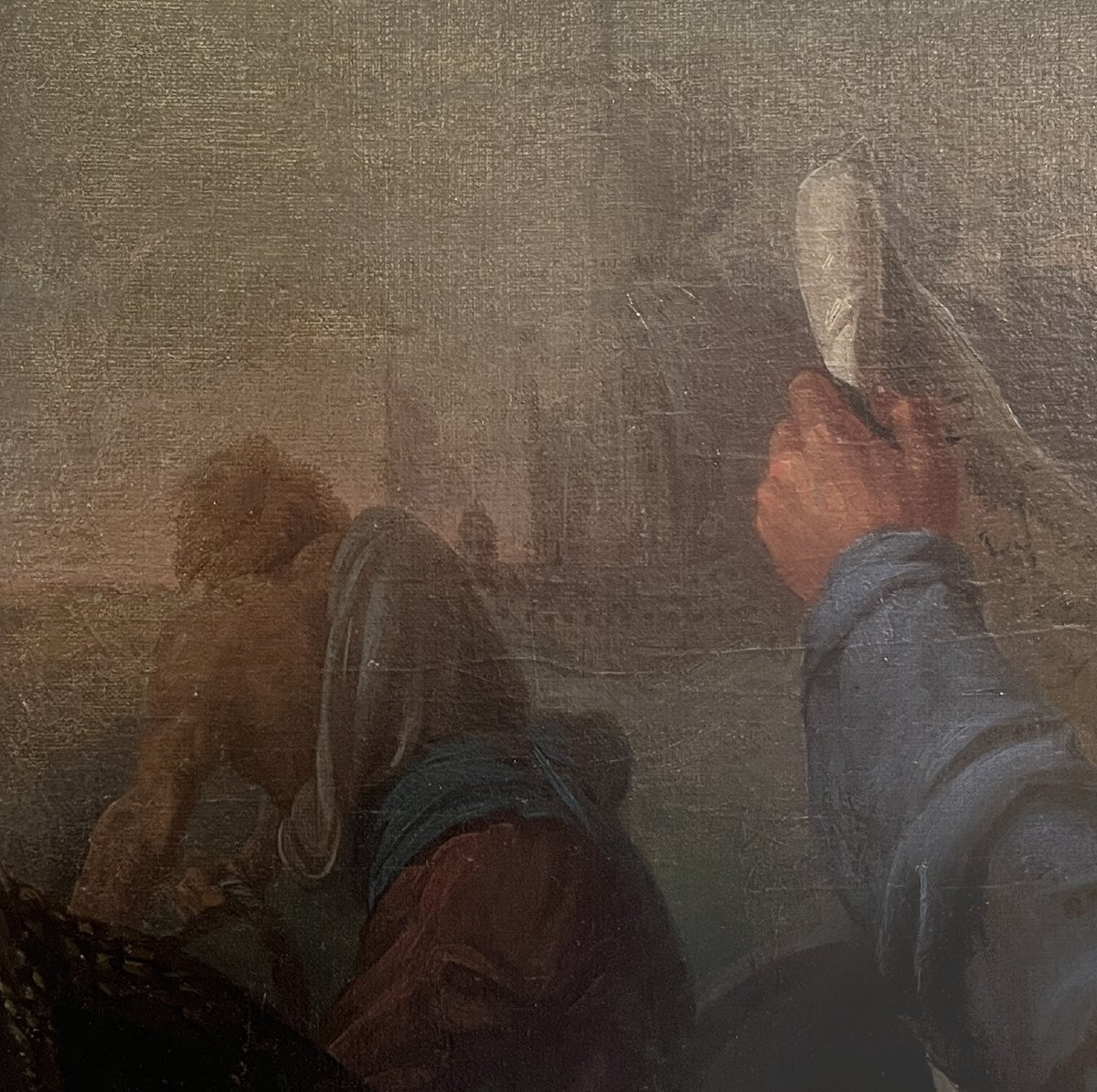
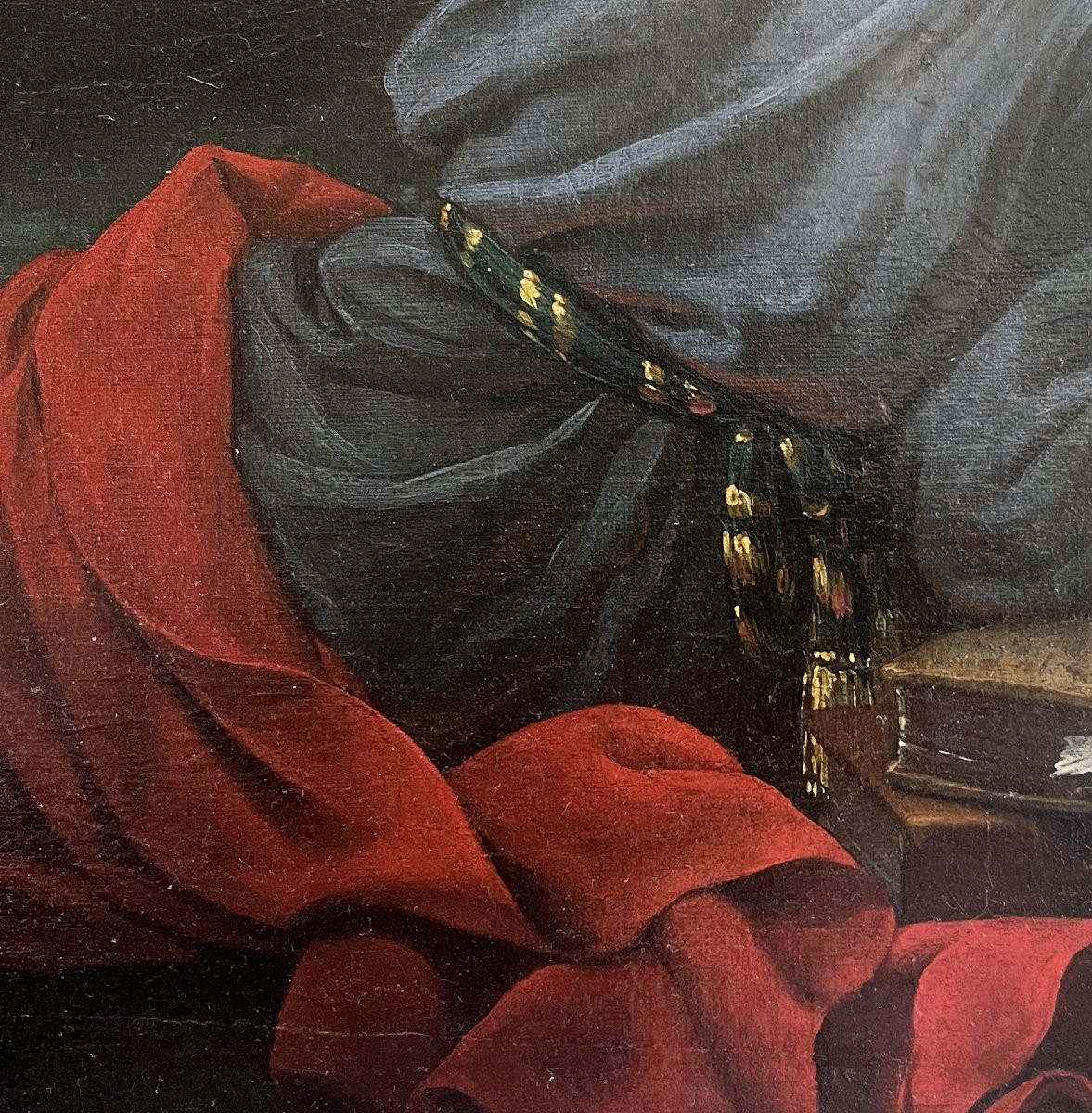


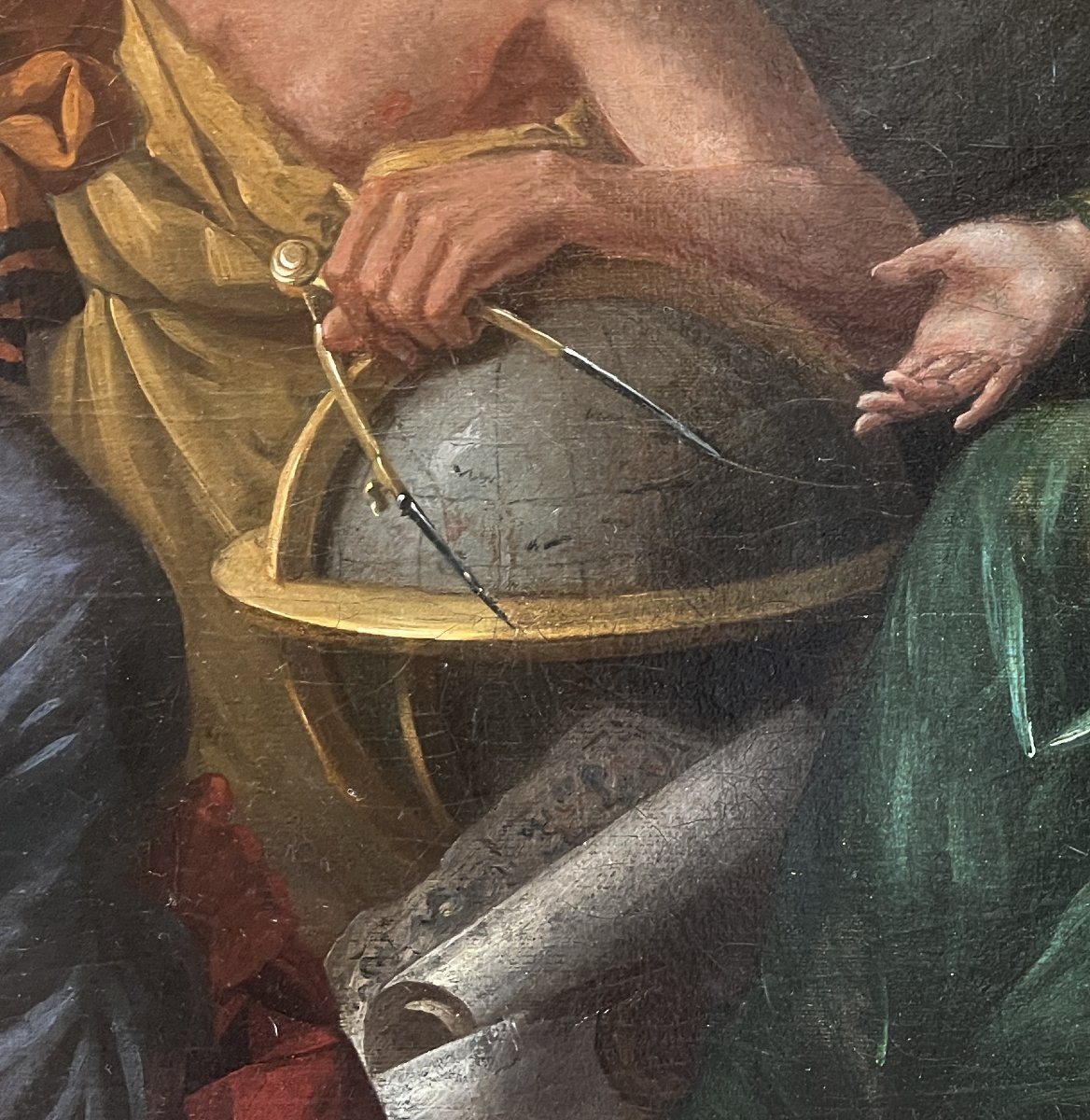



















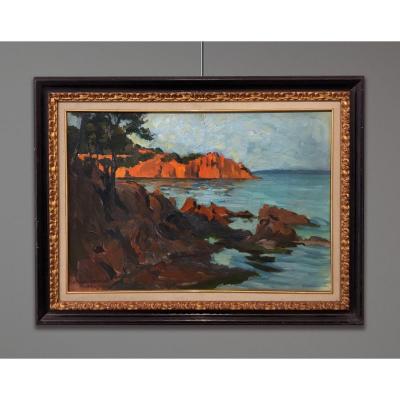
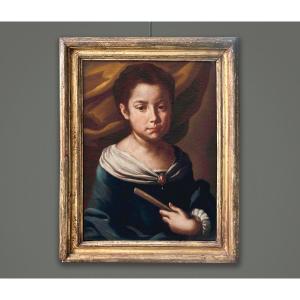




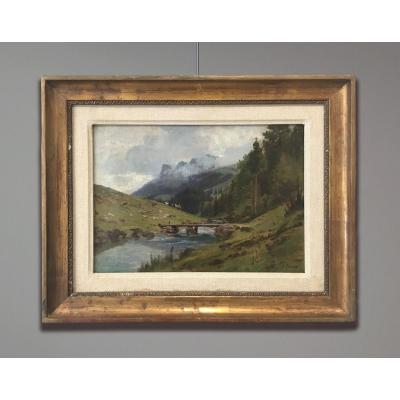

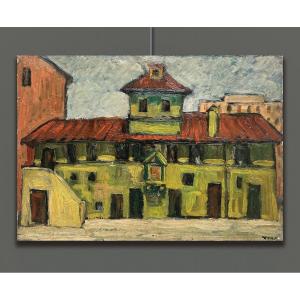








 Le Magazine de PROANTIC
Le Magazine de PROANTIC TRÉSORS Magazine
TRÉSORS Magazine Rivista Artiquariato
Rivista Artiquariato